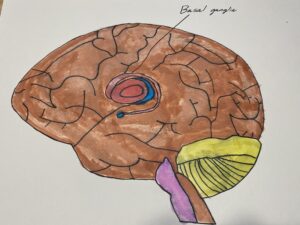Myokymia is the rippling, quivering and involuntary contractions of muscle. Blepharospasm is characterized by excessive involuntary closure of the orbicularis muscles around the eye. The condition of Myokymia is very common and happens to most people during their lifetime. Myokymia can develop to Blepharospasm but the main difference is the severity of contractions. Throughout this paper I will introduce more about Blepharospasm, about the causes and also treatment options for if the condition is extreme.

Myokymia is the involuntary movement of muscles. The muscles of people who have this condition can quiver and ripple as well. In some cases, myokymia can develop into blepharospasm, which is described as excessive involuntary closure in the muscles around the eyes. Sam says that “the main difference is the severity of contractions”.
There are a few things that can raise someone’s likelihood of developing blepharospasm. A few examples include living in an urban environment, having a sleep disorder, being a woman, and having mental health issues.
So far we don’t know the exact cause of this disorder (although there are some theories) so there is also, unfortunately, no cure yet. However, there are treatments available to decrease the severity of the spasms. There is a surgical procedure, oral medication, and injection (which contains botulism !!! so cool !!) that are all available. Therapy may also help, although there is no evidence suggesting it’s very successful.
For his art portion, Sam drew a diagram of a human brain where he highlighted the basal ganglia, which may have malfunctioning cells. Sam said could be the cause of blepharospasm, so I like that he used it as the focus of his art portion.
I really liked reading about this condition and honestly feel like I might have this (I’m not diagnosing myself of course). A while back I started a new medication and then developed persistent eye twitches in the corners of my eyes. When I brought them up to my optometrist, she said to lay off caffeine and drink some tonic water for its magnesium, neither of which I did but it did get better. I honestly might just be psyching myself out but nonetheless, I’m glad I got to see Sam’s project!
Myokymia is described as rippling, quivering involuntary contractions of the facial muscles. Blepharospasm, the abnormal excessive involuntary closure of muscles around the eyes. The contraction episodes can either be unnoticeable or very painful, where they can also range from a short time to even several days. Although there is uncertainty in what exactly causes this condition, some potential risk factors can include lack of sleep, having mental health issues, having dry eye diseases, or living in higher urbanized areas.
There is often confusion between the two; however, they are not the same, as myokymia can (eventually) develop into blepharospasms. Both are common conditions and can occur during our lifetime.
Currently, there are no discovered cures for blepharospasms; however, there are several treatments that can reduce the severity of the spasm. Available treatments can include oral medications, and the injection of botox into the eyelid muscles(in the United States and Canada). Other options include oral medication, and alternative treatments like therapy, which can include acupuncture, chiropractic, and nutritional therapy. These forms of therapy have yet to be proven as beneficial.
For Sam’s art portion of the project, he drew an illustration and showed the basal ganglia’s location in the human brain, which is believed to be the cause of the spasm when it malfunctions. It was really interesting learning about blepharospasm and eye contractions, as I never thought in depth about them, and it’s good information to know if anything seems more concerning!